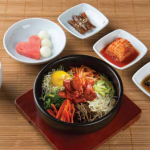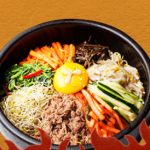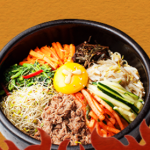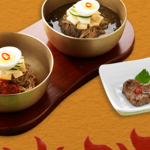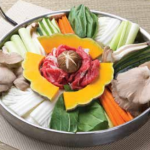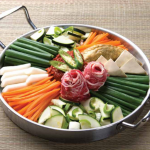Introduction
Korean cuisine is renowned for its bold flavors, vibrant colors, and diverse array of dishes. From the sizzling sound of sizzling bulgogi on a grill to the comforting aroma of savory kimchi, Korean food has gained international popularity and captivated the taste buds of food lovers worldwide. In this article, we will explore some iconic dishes that immediately come to mind when thinking about Korean cuisine.
Body
1. Bulgogi: The Sizzling Delight
One of the most popular dishes in Korean cuisine is bulgogi. It consists of thinly sliced, marinated beef, typically grilled or pan-fried to perfection. The beef is marinated in a sauce made from soy sauce, garlic, ginger, and other ingredients that infuse it with a rich umami flavor. The tender texture of the meat and the caramelization achieved during cooking make bulgogi a highly enjoyable and satisfying dish.
2. Kimchi: The Quintessential Side Dish
No discussion about Korean cuisine would be complete without mentioning kimchi. This traditional fermented cabbage dish is a staple in Korean households and a symbol of Korean culinary heritage. Kimchi is made by fermenting cabbage with red chili pepper paste, garlic, ginger, and other seasonings. It offers a delightful combination of spicy, tangy, and slightly sour flavors that pair beautifully with rice and other dishes.
3. Bibimbap: A Colorful and Nutritious Bowl
Bibimbap, which means “mixed rice” in Korean, is a colorful and nutritious dish that is as pleasing to the eyes as it is to the taste buds. It typically consists of a bowl of steamed rice topped with an assortment of seasoned vegetables, a fried egg, and often accompanied by sautéed beef, commonly known as bulgogi. The dish is completed with a savory sauce made from fermented soybean paste, gochujang, providing a spicy kick.
4. Jjajangmyeon: A Chinese-Korean Fusion
Jjajangmyeon is a delightful noodle dish with Chinese origins that has become an integral part of Korean cuisine. It features thick, chewy noodles smothered in a savory black bean sauce, often accompanied by diced pork and vegetables. This dish delivers a unique combination of flavors and textures, and it has gained immense popularity in Korea due to its comforting and satisfying nature.
5. Samgyeopsal: The Sizzling Pork Belly
Samgyeopsal, also known as Korean BBQ, is a favorite among locals and visitors alike. It is a DIY dining experience where diners grill thick slices of pork belly at their table. The sizzling pork belly is usually wrapped in lettuce leaves and enjoyed with various condiments such as kimchi, pickled radishes, and soybean paste. The mouth-watering combination of juicy, smoky pork and the freshness of the lettuce creates an unforgettable flavor.
Conclusion
Korean cuisine is a treasure trove of exquisite dishes that never fail to tantalize the taste buds. From the sizzling delights of bulgogi and samgyeopsal to the spicy pleasures of kimchi and bibimbap, each dish offers a unique gastronomic experience. Exploring Korean cuisine is truly a journey worth embarking on, as it allows us to discover new flavors, textures, and cultural nuances associated with this vibrant cuisine.
FAQ Section
Q1: Is Korean cuisine spicy?
A1: Korean cuisine is known for its spicy dishes, but it also offers a wide range of non-spicy options. Depending on personal preference, one can explore mild, moderately spicy, or boldly fiery dishes, making Korean cuisine suitable for various taste buds.
Q2: Can vegetarians enjoy Korean cuisine?
A2: While Korean cuisine traditionally incorporates meat, there are several vegetarian-friendly options available. Dishes like bibimbap can be customized to exclude meat, and there are also vegetable-based stews, pancakes, and fermented side dishes like kimchi that vegetarians can savor.
Q3: Are Korean dishes gluten-free?
A3: Many Korean dishes are naturally gluten-free or can be easily modified to be gluten-free. However, caution must be exercised as certain sauces and condiments, such as soy sauce, may contain gluten. It is advisable to communicate any dietary restrictions to ensure a safe dining experience.
Q4: What are some popular Korean street foods?
A4: Korean street foods are a delightful culinary adventure. Some popular street foods in Korea include tteokbokki (spicy rice cakes), gimbap (seaweed rice rolls), hotteok (sweet pancakes), and bungeoppang (fish-shaped pastries filled with sweet red bean paste).
Q5: Which Korean dish would you recommend for someone trying Korean cuisine for the first time?
A5: For first-time explorers of Korean cuisine, bulgogi or bibimbap are excellent choices. Bulgogi offers a delicious introduction to Korean flavors, and bibimbap showcases the harmonious integration of various ingredients, providing a well-rounded experience.

